1877 Edmund Sidney Pollock Haynes, author. HAYNES ONLINE: The
Decline of Liberty in England
1862 Arthur Bowen Davies, US artist who died in 1928. — LINKS
— Pacific
Parnassus, Mount Tamalpais
1859 Irving Addison Bacheller, author. BACHELLER ONLINE: Eben
Holden: A Tale of the North Country
1854 MacMahon,
mathematician
1849 Ivan Pavlov, Russian physiologist, famous for his Nobel Prize-winning
behavioral studies on conditioned reflexes in dogs in the 1890s.
1848 Helen Allingham, British artist who died in 1926. —
LINKS
1846 Mary Hannay (Black) Foott, poet. FOOTT ONLINE: Where
the Pelican Builds and Other Poems
1843 Joseph Furphy, author. FURPHY ONLINE: Such
is Life: Being Certain Extracts from the Diary of Tom Collins
(his pseudonym)
1829 Scotland Yard, the official British criminal investigation
organization, is formed.
1823 William Henry Knight, British artist who died on 31 July
1863.
1820 Isvar Chandra Vidyasagar father of Bengali prose (Exile of
Sita)
1798 Tomás Cipriano de Mosquera y Arboleda, político y militar
colombiano.
1797 James Wallis Eastburn, author. EASTBURN ONLINE: Yamoyden:
A Tale of the Wars of King Philip
1791 Jean Louis André Théodore Géricault, French Romantic
painter who died on 26 January 1824. — MORE ON GÉRICAULT AT ART “4” SEPTEMBER
— LINKS
— Equestrian
Portrait of Charles V — Le
Radeau de la Méduse _ détail
— Study
for The Raft of the Medusa. — Fou
— Folle
— Madwoman
— Woman
with gambling mania — Derby
at Epsom — Officer
of the Imperial Guard — Officer
of the Imperial Guard — An
Italian Mountain Peasant — A
Horse Frightened by Lightning
1790 Nassau William Senior, economist. SENIOR ONLINE: Political
Economy, Three
Lectures on the Rate of Wages
1783 Jane Taylor,
children's writer best known as the author of Twinkle, Twinkle,
Little Star. ^top^
JANE TAYLOR ONLINE:: Essays
in Rhyme on Morals and Manners, Memoirs,
Correspondence and Poetical Remains of Jane Taylor,
co-author of Little
Ann and Other Poems. In The Spider she made two
mistakes: 1. calling it an insect. 2. saying it could do us
no harm (it could if it were a Black Widow or of another venemous
species). |
Twinkle,
twinkle, little star,
How I wonder what you are.
Up above the world so high,
Like a diamond in the sky.
Twinkle, twinkle, little star,
How I wonder what you are! |
When the blazing sun is gone,
When he nothing shines upon,
Then you show your little light,
Twinkle, twinkle, all the night.
Twinkle, twinkle, little star,
How I wonder what you are! |
Then the traveler in the dark
Thanks you for your tiny spark;
He could not see which way to go,
If you did not twinkle so.
Twinkle, twinkle, little star,
How I wonder what you are! |
THE SPIDER.
(from Little Ann and Other Poems)
"OH, look at that great ugly spider!" said Ann;
And screaming, she brush'd it away with her fan;
"'Tis a frightful black creature as ever can be,
I wish that it would not come crawling on me. "
"Indeed," said her mother, "I'll venture to say,
The poor thing will try to keep out of your way;
For after the fright, and the fall, and the pain,
It has much more occasion than you to complain.
"But why should you dread the poor insect, my dear?
If it hurt you, there'd be some excuse for your fear;
But its little black legs, as it hurried away,
Did but tickle your arm, as they went, I dare say.
"For them to fear us we must grant to be just,
Who in less than a moment can tread them to dust;
But certainly we have no cause for alarm;
For, were they to try, they could do us no harm.
"Now look! it has got to its home; do you see
What a delicate web it has spun in the tree?
Why here, my dear Ann, is a lesson for you:
Come learn from this spider what patience can do!
"And when at your business you're tempted to play,
Recollect what you see in this insect to-day,
Or else, to your shame, it may seem to be true,
That a poor little spider is wiser than you. "
|
REMONSTRANCE TO TIME.
(June 1908, from Poetical Remains)
|
STAY hoary Sage! one moment deign
To hear thy duteous child complain;
Nor scorn her pensive lay:
But while a suppliant at thy side,
Thy fearful scythe in pity hide,
And that old hour-glass throw aside;
They fright my song away.
Regardless of thy hoary age,
Thou indefatigable Sage,
Incessant is thy toil:
Thou canst, with an unnatural joy,
Thine own ingenious works destroy;
For 't is thy favorite employ
To perfect and to spoil.
And Beauty's temple, Wisdom's brow,
Old Time! it well befits thee now,
With pains to decorate:
Scatter thy silver honors there,
But, O, good father Time, forbear!
I ask thee not to deck my hair;
It ill becomes thy state.
Go, bind thine ivy o'er the oak,
And spread thy rich embroidered cloak
Around his trunk the while;
Or deck with moss the abbey wall,
And paint grotesque the Gothic hall,
And sculpture, with thy chisel small,
The monumental pile:
But oh! from such majestic height,
Wilt thou, descending, stoop thy flight
To seek my lowly door?
What glory canst thou reap from me,
By all neglected but by thee?
Consider thine own dignity,
And proudly pass me o'er.
|
But false the hope! and vain the prayer!
Thy hand was never known to spare;
Nor will thy speed delay:
Yet hear thy trembling victim's sigh;
If e'er thy microscopic eye
Perchance one youthful grace espy,
May that become thy prey!
Thy wrinkles, and thy locks of snow
(The choicest gifts thy hand bestow)
At those I do not start:
But come not thou a treacherous guest,
To steal those feelings, dearest, best
That glow that warms the youthful breast:
With these I cannot part.
Oh! should such joys supplanted be
By frigid worldly policy;
And cold distrust ensue;
Adieu, ye dear poetic powers,
And Fancy's fair enchanted bowers,
And all the sweets that once were ours;
A long, a sad adieu!
But is it in thy power to chill
Affection's dear transporting thrill,
And Friendship's fervid glow?
Ah! if thy cruel aim be this,
I shudder at thy marble kiss,
And clinging to my parting bliss,
Call bitter tears to flow.
But, Sire, command these fears away:
Tell me, affection's milder ray
Shall gild my wintry sky:
That hope my fainting spirit cheers,
Dispels my sighs, and dries my tears:
Angelic now thy form appears,
And mercy in thine eye.
|
1774 Johnathan Chapman (Johnny Appleseed),
Leominster, Mass. pioneer environmentalist.
^top^
Distributing apple seeds and religious tracts from the Alleghenies
to the Ohio Valley, Chapman's theology was strongly reminiscent
of Swedenborgianism, which taught an empathy with the natural
world. He was a missionary nurseryman of the North American
frontier who helped prepare the way for 19th-century pioneers
by supplying apple-tree nursery stock throughout the Middle
West. The resulting apple trees, grown from seed without grafts,
were unsuitable for anything but cider, which was greatly appreciated
by the pioneers short on alcohol.
Although the legendary character
of "Johnny Appleseed" is known chiefly through fiction, John
Chapman was a genuine and dedicated professional nurseryman
who expected to make a profit from the sale of his seedlings.
Around 1800 he started collecting apple seeds from cider presses
in western Pennsylvania and soon began his long trek westward,
planting a series of apple nurseries from the Alleghenies to
central Ohio and beyond. He sold or gave away thousands of seedlings
to pioneers, whose acres of productive apple orchards became
a living memorial to Chapman's missionary zeal. He also was
a medicine man to Native Americans.
A variety of distinctive characteristics
combined to create the "Johnny Appleseed" myth of the primitive
natural man: his cheerful, generous nature, his affinity for
the wilderness, his gentleness with animals, his devotion to
the Bible, his knowledge of medicinal herbs, his harmony with
the Indians, and above all his eccentric appearance — flowing
hair under an inverted mush pan, bare feet, ragged trousers,
and an old coffee sack over his shoulders with holes cut out
for arms.
John Chapman, owner of 500 hectares
of planted land, died from preumonia on 18 March 1845, in the
home of his friend, William Worth. near Fort Wayne, Ind., but
the legend of “Johnny Appleseed” lives on in numerous
literary works. |
1729 Moses Mendelssohn philosopher/critic/Bible translator
1688 'sGravesande,
mathematician |
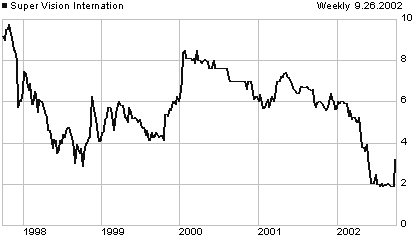 On
a 26 September:
On
a 26 September: 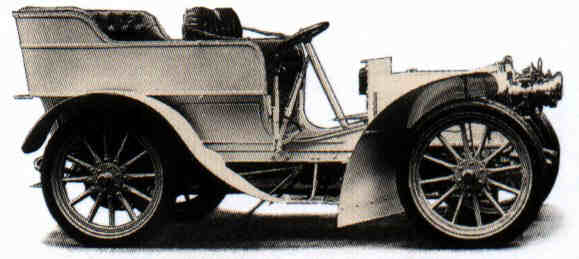 1907
New Zealand becomes a dominion — Nueva Zelanda alcanza la autonomía,
con el Rey de Inglaterra como jefe de Estado.
1907
New Zealand becomes a dominion — Nueva Zelanda alcanza la autonomía,
con el Rey de Inglaterra como jefe de Estado. 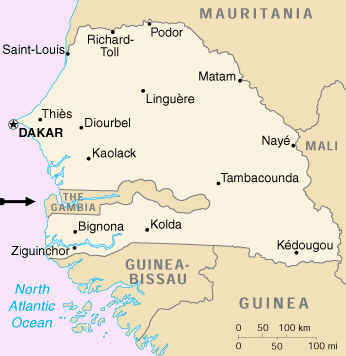 Deaths
Deaths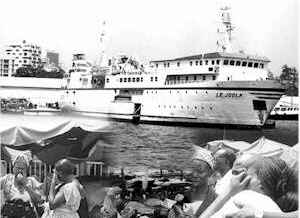
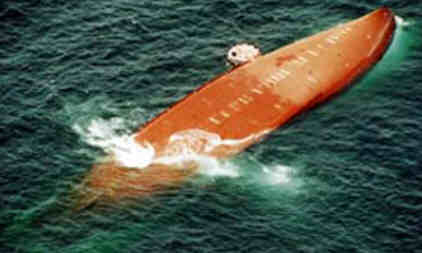 Le Joola venait de reprendre les
eaux depuis seulement deux semaines, après une panne de moteur qui l’a
cloué au port depuis sa dernière rotation entre Ziguinchor et Dakar qui
remonte au 13 septembre 2001. Le 10 septembre dernier, le bateau devient
fonctionnel et reprend service. Il avait, ce jour-là, à son bord le ministre
de la Défense et son collègue de l’Equipement et des Transports.
Le Joola venait de reprendre les
eaux depuis seulement deux semaines, après une panne de moteur qui l’a
cloué au port depuis sa dernière rotation entre Ziguinchor et Dakar qui
remonte au 13 septembre 2001. Le 10 septembre dernier, le bateau devient
fonctionnel et reprend service. Il avait, ce jour-là, à son bord le ministre
de la Défense et son collègue de l’Equipement et des Transports. 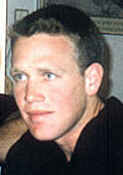 2002
Harel Marmelstein, and Nisa'at Talatin Jaber, a senior Hamas activist.
Captain Marmelstein, 23 [photo >], from Mevasseret Zion,
of the Naval Commandos, led a team of soldiers in a search for Jaber
in the Tul Karm area. Jaber is believed to be responsible for a long
series of terrorist attacks and the dispatch of suicide bombers on their
missions. One of the squads saw an unarmed man moving suspiciously and
called for reinforcements. They pursued the man, firing at him, but he
managed to escape to a small cave in a wadi lined with olive trees near
the village of Lebed. Jaber, for it was him, had hid an automatic rifle
in the cave. Marmelstein had by then moved into the wadi to corner Jaber.
At 06:00 Marmelstein passed by the small cave, not realizing that Jaber
was hiding there. From 40 meters away, Jaber shot Marmelstein in the
chest just below the shoulder, above his protective vest. He was evacuated
by helicopter to Sheba Medical Center at Tel Hashomer, where he died.
Two other soldiers were injured. One of the soldiers fired at the cave
and followed with two LAW anti-tank missiles, killing Jaber.
2002
Harel Marmelstein, and Nisa'at Talatin Jaber, a senior Hamas activist.
Captain Marmelstein, 23 [photo >], from Mevasseret Zion,
of the Naval Commandos, led a team of soldiers in a search for Jaber
in the Tul Karm area. Jaber is believed to be responsible for a long
series of terrorist attacks and the dispatch of suicide bombers on their
missions. One of the squads saw an unarmed man moving suspiciously and
called for reinforcements. They pursued the man, firing at him, but he
managed to escape to a small cave in a wadi lined with olive trees near
the village of Lebed. Jaber, for it was him, had hid an automatic rifle
in the cave. Marmelstein had by then moved into the wadi to corner Jaber.
At 06:00 Marmelstein passed by the small cave, not realizing that Jaber
was hiding there. From 40 meters away, Jaber shot Marmelstein in the
chest just below the shoulder, above his protective vest. He was evacuated
by helicopter to Sheba Medical Center at Tel Hashomer, where he died.
Two other soldiers were injured. One of the soldiers fired at the cave
and followed with two LAW anti-tank missiles, killing Jaber.